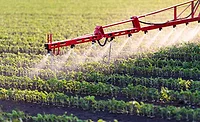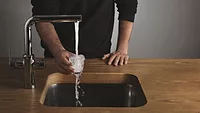EFSA: Pesticide Residues Below Legal Limits in More Than 96 Percent of EU Food Samples

Every year, the European Food Safety Authority (EFSA) compiles a report analyzing pesticide residue monitoring data for foods on the European market. The most recent report covering data from 2022 shows that the assessed risk to EU consumer health from pesticides in foods is low.
Based on 110,829 food samples collected and tested in the EU during 2022—an unprecedented number—96.3 percent of samples fell below maximum residue levels (MRLs) for pesticide residues. Of these 110,829 samples, 3.7 percent exceeded MRLs, of which 2.2 percent were deemed noncompliant (i.e., results in a given sample exceeded MRLs after taking into account the measurement uncertainty).
Additionally, of the subset of 11,727 samples analyzed as part of the EU-coordinated multi-annual control program (EU MACP), 98.4 percent contained residues below legal limits, and 0.9 percent were deemed noncompliant.
EU MACP randomly collects and analyzes samples of 12 food products every year, sampling the same basket of products every three years. For 2022, the chosen foods were apples, strawberries, peaches, wine (red and white), lettuces, head cabbages, tomatoes, spinaches, oat grain, barley grain, cow’s milk, and swine fat. Of the samples analyzed in the EU-coordinated program, 51.4 percent (6,023 samples) were free of quantifiable levels of residues, 47 percent (5,512) contained one or more residues in concentrations below or equal to MRLs, and 1.6 percent (192) contained residues exceeding MRLs.
Overall, based on EU MACP data, the rate of pesticide MRL exceedance for the same 12 food products analyzed in 2022 (which were last analyzed in 2019) decreased by 0.4 percent since 2019. Compared to 2019 and 2016, the exceedance rate fell for apples, peaches, strawberries, wine, and swine fat; and for spinach, the exceedance rate has fallen since 2019. No samples of cow’s milk with residues above the MRL were found in 2022, which is the same as was found in 2019 and 2016. Exceedances rose from previous years for head cabbages, tomatoes, lettuces, barley, and oat grain.
Additionally, to assess acute and chronic risk to consumer health, EFSA estimated dietary exposure to pesticide residues among the EU population and compared the value with available health‐based guidance values (HBGV). The 2022 report extends the probabilistic assessment methodology introduced the year prior to all pesticides analyzed within EU MACP. Probabilistic exposure modeling aims to quantify the probability of true consumers being exposed to an exceedance of the HBGV, in comparison to deterministic modeling (which EFSA uses to decide whether a lot can be placed on the EU market) based on risk calculations for hypothetical consumers under conservative assumptions.
The probabilistic assessment methodology provides a more realistic estimation of consumers’ actual exposure. Using this model, EFSA estimated that, for 111 of the 163 active substances assessed, the probability of an individual exceeding HBGVs in a day is zero for the 40 commodities included in the assessment, covering 30 European subpopulation groups and 17 EU Member States. In the chronic probabilistic assessment, only one active substance in two populations resulted in an estimate of a consumer exceeding an HBGV. In cases where the estimated dietary exposure for a specific pesticide/product combination was calculated to exceed the HBGV, and for those pesticides for which no HBGV could be established, the competent authorities took corrective measures.
Finally, in its report, EFSA provides recommendations to risk managers to increase the effectiveness of EU control systems and to ensure a high level of consumer protection throughout the EU. Recommendations include, but are not limited to, fulfilling the minimum number of samples set in Annex II of the EU MACP regulations, monitoring certain problematic pesticide/crop combinations to clarify the reasons for noncompliance, and improving reporting of sample origins.
Looking for quick answers on food safety topics?
Try Ask FSM, our new smart AI search tool.
Ask FSM →









